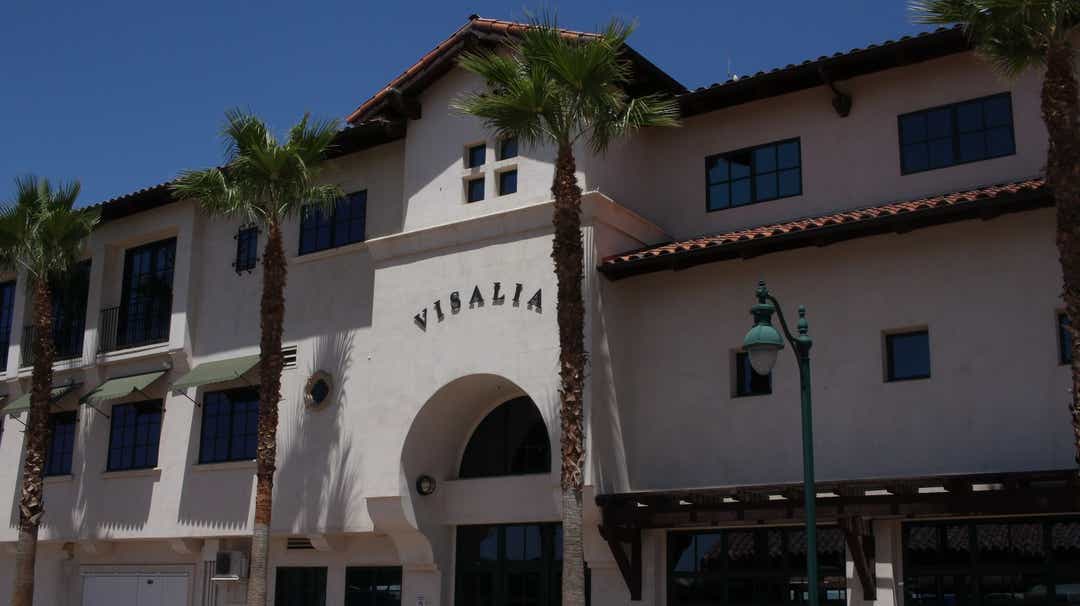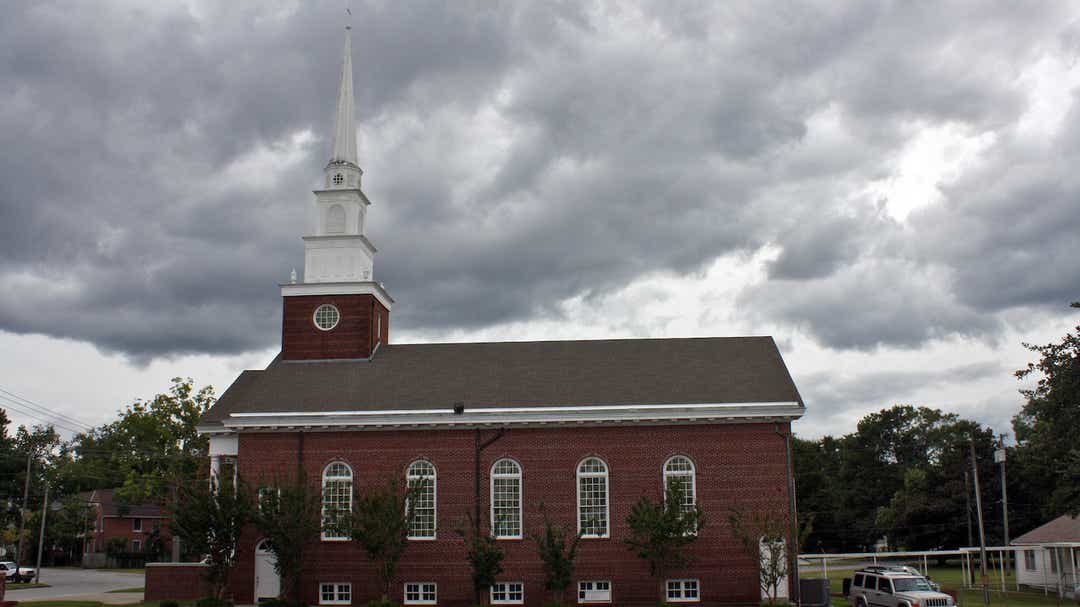LATEST FINANCIAL NEWS
Worst cities to raise a family, children: Using education, crime data
[ad_1]
Perhaps the most important environmental factor to a child’s development is the home – and conditions at home are largely up to the parents. There are, however, many other factors in a child’s surroundings that can be critical to healthy development that are largely outside of parental control.
A child’s physical and mental well-being and overall chances for success later in life can all be influenced by conditions in the broader community. Such factors include school quality, access to preschool, proximity to parks and places for recreation, and the presence of crime. In areas that lag in these measures, children can be at a considerable disadvantage.
Using data from a range of sources, including the U.S. Census Bureau and the FBI, 24/7 Wall St. created an index of four measures – preschool enrollment, high school graduation, property crime, and access to places for physical activity – to identify the worst cities in which to raise children.
Though median income and other measures of financial security and well-being were not included in our index, the cities on this list tend to have larger than typical shares of poor residents. Of the 25 worst cities to raise children, 21 have a higher poverty rate than the national rate of 13.4%. Many of these cities also rank among the poorest cities in America. Here is a full list of the cities with the highest poverty rates.
Low incomes in the cities on this list may have a negative effect on school quality as nearly half of all public school funding in the United States comes from local sources like property taxes. While the relationship between school spending and student outcomes is complicated, a weaker tax base may partially explain the low graduation rates in many of these cities.
It is important to note that a low graduation rate in a metro area does not necessarily mean all area schools are poor-performing, as multiple school districts can fall within a single metro area. Here is a district level look at the schools where students are least likely to succeed by state.
Know where to send your kids: The best public high school in your state

25. Visalia-Porterville, California
• Preschool enrollment: 25.9% (lowest 10%)
• High school graduation rate: 86.1%
• Pop. with access to areas for exercise: 60.5% (lowest 10%)
• Property crime rate: 2,543 crimes per 100,000 people
Visalia-Porterville is one of two California metro areas to rank on this list. Early childhood education can be critical for cognitive development, and in Visalia, only about one in every four 3- and 4-year olds are enrolled in preschool, well below the 48.0% national enrollment rate.
People in Visalia-Porterville have limited access to parks, recreation centers, and other venues for social and physical activity that can be beneficial for childhood development. Just 60.5% of metro area residents have access to such places, one of the smallest shares of any U.S. metro area and well below the 84.0% national rate.
24. Mobile, Alabama
• Preschool enrollment: 45.4%
• High school graduation rate: 83.7%
• Pop. with access to areas for exercise: 72.0%
• Property crime rate: 4,555 crimes per 100,000 people (highest 10%)
Crimes like burglary and motor vehicle theft are relatively common in Mobile – the metro area’s property crime rate of 4,555 incidents per 100,000 residents is higher than in at least 90% of U.S. metro areas. Crime can have wide-reaching effects beyond the victim, often affecting the mental health of residents of a community. Children in Mobile are also less likely to graduate from high school on time or have access to places for recreation, like parks, compared to most American children.
Like many metro areas on this list, Mobile is a relatively poor city. About one in every five metro area residents live below the poverty line, well above the 13.4% national poverty rate.
23. Lake Havasu City-Kingman, Arizona
• Preschool enrollment: 32.6% (lowest 20%)
• High school graduation rate: 83.4%
• Pop. with access to areas for exercise: 65.6% (lowest 20%)
• Property crime rate: 3,227 crimes per 100,000 people (highest 20%)
In the Lake Havasu area of Arizona, less than one-third of 3- and 4-year-old children are enrolled in preschool, as compared to nearly half of all children that age nationwide. Children not in preschool may miss out on crucial opportunities for cognitive and social development.
Less than two-thirds of Lake Havasu residents have somewhere they can go to get physical activity, making it more difficult for them to stay in shape and maintain good health practices, as well as to keep their children active and healthier.
22. Montgomery, Alabama
• Preschool enrollment: 30.7% (lowest 10%)
• High school graduation rate: 84.4%
• Pop. with access to areas for exercise: 68.5% (lowest 20%)
• Property crime rate: 3,532 crimes per 100,000 people (highest 20%)
A strong public early childhood education program can help working and single parent families with childcare needs. In Montgomery, fewer than one in every three 3- and 4-year olds are enrolled in a preschool program, compared to nearly half of all children in that age group nationwide.
High crime rates also make Montgomery more dangerous and lowers overall quality of life in the metro area. Both violent crime – a category made up of robbery, rape, aggravated assault, and murder – and property crime, like burglary and motor vehicle theft, are far more common in Montgomery than they are across the U.S. as a whole.
21. Valdosta, Georgia
• Preschool enrollment: 42.8%
• High school graduation rate: 82.9%
• Pop. with access to areas for exercise: 62.0% (lowest 10%)
• Property crime rate: 3,635 crimes per 100,000 people (highest 10%)
Valdosta, Georgia, is one of many metro areas in the South to rank on this list. Just 62% of Valdosta residents have access to recreation areas like parks and playgrounds, a smaller share than in at least 90% of metro areas nationwide.
The metro area’s high school graduation rate of 82.9% is also lower than the national average. Greater investment in public education may improve student outcomes in Georgia, as a whopping 91% of students in the state are enrolled in districts spending less per pupil than the average spending nationwide.
Lawyer: Man who assaulted a boy during national anthem is convinced Trump ordered it

20. Yakima, Washington
• Preschool enrollment: 30.1% (lowest 10%)
• High school graduation rate: 78.5% (lowest 10%)
• Pop. with access to areas for exercise: 75.3%
• Property crime rate: 3,235 crimes per 100,000 people (highest 20%)
High school students in Yakima, Washington, are less likely to graduate on time than those in at least 90% of metro areas nationwide. Yakima’s graduation rate of 78.5% is well below the national rate of 84.6%. A strong early childhood education program can be beneficial to cognitive development, but in Yakima, just 30.1% of 3- and 4-year olds are enrolled in preschool, one of the lowest enrollment rates among U.S. metro areas.
19. Muskegon, Michigan
• Preschool enrollment: 24.7% (lowest 10%)
• High school graduation rate: 80.6% (lowest 20%)
• Pop. with access to areas for exercise: 77.4%
• Property crime rate: 3,354 crimes per 100,000 people (highest 20%)
Muskegon is the only metro area in Michigan – and the broader Midwestern United States – to rank on this list. Preschool can be critical for early childhood cognitive development, and in Muskegon, less than 25% of 3- and 4-year olds are enrolled in preschool, one of the smallest shares of any metro area and only about half the national enrollment rate.
High crime rates can detract from the quality of life in a community and are indicative of a less than ideal environment in which to raise children. In Muskegon, there were 3,354 property crimes for every 100,000 people in 2017, more than in at least 80% of U.S. metro areas.
18. Cheyenne, Wyoming
• Preschool enrollment: 27.6% (lowest 10%)
• High school graduation rate: 79.2% (lowest 10%)
• Pop. with access to areas for exercise: 71.3%
• Property crime rate: 2,843 crimes per 100,000 people
A high school diploma is a prerequisite to the vast majority of employment opportunities in the United States – and students in Cheyenne, Wyoming, are less likely to graduate from high school on time than the typical American student. Cheyenne’s graduation rate of 79.2% is below that of at least 90% of U.S. metro areas.
A strong early childhood education program can help working and single parents manage childcare responsibilities and help in a child’s cognitive development. In Cheyenne, just 27.6% of 3- and 4-year olds are enrolled in preschool, one of the smallest shares of any metro area.
17. Rocky Mount, North Carolina
• Preschool enrollment: 38.5%
• High school graduation rate: 81.3% (lowest 20%)
• Pop. with access to areas for exercise: 51.7% (lowest 10%)
• Property crime rate: 2,364 crimes per 100,000 people
Having access to parks and playgrounds, where children can be active and get exercise is important for a child’s physical development. Yet barely over half of the people who live in Rocky Mount, North Carolina, area have access to a place where they can get physical activity, at 51.7%. This is one of the lowest access rates in the country.
Education spending in North Carolina is relatively low. Of all the taxable resources collected in the state, just 2.3% go to education, less than the 3.3% national average.
16. Alexandria, Louisiana
• Preschool enrollment: 52.9% (highest 20%)
• High school graduation rate: 78.8% (lowest 10%)
• Pop. with access to areas for exercise: 72.4%
• Property crime rate: 4,764 crimes per 100,000 people (highest 10%)
Fewer than three out of every four Alexandria metro area residents have access to places for physical activity like parks and playgrounds, compared to 84% of the population nationwide.
Alexandria also has some of the worst performing high schools in the country – at least as measured by graduation rates. Across the metro area, just 78.8% of high schooler graduate on time, well below the 84.6% national high school graduation rate.

15. Medford, Oregon
• Preschool enrollment: 28.3% (lowest 10%)
• High school graduation rate: 77.0% (lowest 10%)
• Pop. with access to areas for exercise: 82.6%
• Property crime rate: 3,892 crimes per 100,000 people (highest 10%)
A high incidence of crime makes Medford a less than ideal metro area in which to raise children. There were 3,892 crimes like burglary and motor vehicle theft for every 100,000 people in the area in 2017, a higher property crime rate than in over 90% of U.S. metro areas.
Metro area high schools are also graduating a far smaller than typical share of their students on time. The graduation rate of 77.0% in Medford is considerably lower than the 84.6% national high school graduation rate.
14. Pueblo, Colorado
• Preschool enrollment: 47.0%
• High school graduation rate: 81.0% (lowest 20%)
• Pop. with access to areas for exercise: 68.1% (lowest 20%)
• Property crime rate: 4,838 crimes per 100,000 people (highest 10%)
High crime rates can take a toll on the community. High crime areas are more dangerous and can cause stress that detracts from the overall quality of life.
Pueblo, Colorado, has the third highest property crime rate of any metro area in the country, with 4,838 reported incidents per 100,000 people, more than double the U.S. property crime rate of 2,362 per 100,000. Pueblo’s violent crime rate of 726 incidents per 100,000 residents is also one of the highest in the country and close to twice as high as the national rate.
13. Florence, South Carolina
• Preschool enrollment: 38.2%
• High school graduation rate: 87.0%
• Pop. with access to areas for exercise: 59.9% (lowest 10%)
• Property crime rate: 4,426 crimes per 100,000 people (highest 10%)
Florence, South Carolina, has the third highest murder rate of U.S. metro areas, with 23.3 reported homicides per 100,000 residents – more than four times the nationwide rate. This is not only generally dangerous, but it can also contribute to stress and anxiety for area residents.
Many of the cities on this list are home to large shares of residents facing serious financial hardship – and Florence is no exception. The metro area’s 19.3% poverty rate is well above the 13.4% nationwide poverty rate.
12. Gadsden, Alabama
• Preschool enrollment: 35.8% (lowest 20%)
• High school graduation rate: 90.3%
• Pop. with access to areas for exercise: 45.2% (lowest 10%)
• Property crime rate: 3,781 crimes per 100,000 people (highest 10%)
Gadsden ranks as the worst of the three Alabama metro areas on this list. One primary explanation for area’s low ranking is its lack of public parks and playgrounds. Just 45.2% of metro area residents have access to recreational areas, the third smallest share of any U.S. metro area.
Crime is also relatively common in Gadsden. There were 3,781 property crimes for every 100,000 people in the metro area in 2017, more than in over 90% of metro areas nationwide.
11. Albany, Oregon
• Preschool enrollment: 13.3% (lowest 10%)
• High school graduation rate: 74.8% (lowest 10%)
• Pop. with access to areas for exercise: 76.6%
• Property crime rate: 2,547 crimes per 100,000 people
Early childhood education can be critical for cognitive development, and strong preschool programs can help working and single parent households with childcare. In Albany, Oregon, just 13.3% of 3- and 4-year olds are enrolled in preschool, the smallest share of any metro area in the country.
Area high schools are also lagging behind much of the nation. Fewer than three out of every four high school students in the Albany metro area graduate on time, nearly 10 percentage points below the national graduation rate.

10. Jacksonville, North Carolina
• Preschool enrollment: 28.2% (lowest 10%)
• High school graduation rate: 88.9%
• Pop. with access to areas for exercise: 51.0% (lowest 10%)
• Property crime rate: N/A
Only about half of the Jacksonville, North Carolina, metro area population has access to places for physical activity like parks, playgrounds, and recreational centers. Nationwide, 84.0% of the population has access to such places.
Preschool can be critical for a child’s cognitive development, and children in Jacksonville are far less likely to be enrolled in a preschool program than most children. Just 28.2% of 3- and 4-year olds in the metro area attend preschool compared to 48.0% of 3- and 4-year olds nationwide.
9. Hanford-Corcoran, California
• Preschool enrollment: 31.0% (lowest 20%)
• High school graduation rate: 80.4% (lowest 20%)
• Pop. with access to areas for exercise: 42.6% (lowest 10%)
• Property crime rate: 1,967 crimes per 100,000 people
Access to places for recreational areas like parks and playgrounds can help encourage young children to be physically active. However, only 42.6% of the Hanford-Corcoran, California, metro area residents have easy access to such places, the smallest share of any U.S. city.
High school students in Hanford-Corcoran are also less likely to graduate on time than most high schoolers. The graduation rate of 80.4% across the metro area falls below that of the vast majority of metro areas nationwide and the national graduation rate of 84.6%.
8. Anchorage, Alaska
• Preschool enrollment: 33.0% (lowest 20%)
• High school graduation rate: 79.4% (lowest 20%)
• Pop. with access to areas for exercise: 83.6%
• Property crime rate: 5,441 crimes per 100,000 people (highest 10%)
Areas with high concentrations of crime are less than ideal for families with young children. Not only is the likelihood of being the victim of a crime is higher than average, but also high crime rates in a community can have a negative psychological impact on everyone living there.
In Anchorage, the violent crime rate of 1,163 incidents per 100,000 people is more than three times the national violent crime rate, and the metro area’s property crime rate of 5,441 incidents per 100,000 is more than double the national property crime rate.
7. Charleston, West Virginia
• Preschool enrollment: 24.3% (lowest 10%)
• High school graduation rate: 83.9%
• Pop. with access to areas for exercise: 62.7% (lowest 10%)
• Property crime rate: N/A
Charleston is the only West Virginia metro area to rank on this list. The low ranking is due in large part to the low-preschool enrollment rate in the capital city. Less than 25% of 3- and 4-year olds in Charleston are enrolled in preschool, about half the comparable national enrollment rate.
Children in Charleston are also less likely than most to have easy access to places to play. Just 62.7% of the metro area population has access to recreation areas like parks and playgrounds, one of the smallest shares nationwide.
6. Hinesville, Georgia
• Preschool enrollment: 28.3% (lowest 10%)
• High school graduation rate: 83.3%
• Pop. with access to areas for exercise: 60.1% (lowest 10%)
• Property crime rate: N/A
Early childhood education programs can have many benefits for children and families – from improved cognitive development to offering single and working parents childcare. In Hinesville, just 28.3% of 3- and 4-year olds are enrolled in preschool, a smaller share than in at least 90% of U.S. metro areas.
People in Hinesville have limited access to parks, recreation centers, and other venues for social and physical activity that can be beneficial for childhood development. Just 60.1% of metro area residents have access to such places, one of the smallest shares of any U.S. metro area and well below the 84.0% national rate.
Five years later: Photos reflect changes in Ferguson

5. Monroe, Louisiana
• Preschool enrollment: 33.8% (lowest 20%)
• High school graduation rate: 81.0% (lowest 20%)
• Pop. with access to areas for exercise: 70.4% (lowest 20%)
• Property crime rate: 4,758 crimes per 100,000 people (highest 10%)
Of the two Louisiana metro areas on this list, Monroe ranks as the worst. Crime can have wide-reaching effects on the entire community, contributing to poorer mental health and economic issues – and crime rates in Monroe are high. There were 4,758 property crimes for every 100,000 metro area residents in 2017, more than double the comparable national property crime rate.
More serious violent crimes are also relatively common in Monroe. There were 935 violent crimes – a classification comprising murder, rape, robbery, and aggravated assault – for every 100,000 people in the metro area in 2017. The same year, the national violent crime rate was 383 incidents per 100,000 people.
4. Goldsboro, North Carolina
• Preschool enrollment: 29.8% (lowest 10%)
• High school graduation rate: 82.5%
• Pop. with access to areas for exercise: 47.5% (lowest 10%)
• Property crime rate: 2,885 crimes per 100,000 people
Goldsboro, North Carolina, is one of just a small share of U.S. metro areas in which more than 70% of 3- and-4-year-olds are not enrolled in preschool, preventing them from gaining the same vital cognitive development as their peers in preschool.
Many people in the metro area face serious challenges to leading a healthy lifestyle. More than a third of Goldsboro area residents under 18 years old live below the poverty line, and less than half of all residents have access to a place where they can get physical activity.
3. Albuquerque, New Mexico
• Preschool enrollment: 41.5%
• High school graduation rate: 70.3% (lowest 10%)
• Pop. with access to areas for exercise: 84.8%
• Property crime rate: 5,499 crimes per 100,000 people (highest 10%)
Albuquerque ranks as one of the three worst cities to raise children in large part because of how dangerous it is. The metro area has the highest property crime rate in the nation, with nearly 5,500 reported incidents per 100,000 residents, well more than double the U.S. property crime rate. It also ranks fourth among all metro areas in violent crime, with 1,085 incidents per 100,000 people. Such high crime levels contribute to an unsafe and stressful environment for adults and children alike.
2. Farmington, New Mexico
• Preschool enrollment: 46.8%
• High school graduation rate: 65.9% (lowest 10%)
• Pop. with access to areas for exercise: 55.0% (lowest 10%)
• Property crime rate: 2,783 crimes per 100,000 people
Farmington, along with Albuquerque, is one of two New Mexico metro areas to rank among the top three worst places to raise children. A quality education is important in setting a child up for success in their adult life, but Farmington kids often do not finish school. Farmington has a high school graduation rate of just 65.9%, the lowest of any U.S. metro area.
Just 55.0% of Farmington area residents have access to areas such as parks and playgrounds, where adults and children alike can be active.
Travel: Why are Marriott hotels grappling with a summer slowdown?

1. Fairbanks, Alaska
• Preschool enrollment: 29.8% (lowest 10%)
• High school graduation rate: 69.6% (lowest 10%)
• Pop. with access to areas for exercise: 75.4%
• Property crime rate: 4,664 crimes per 100,000 people (highest 10%)
Fairbanks, Alaska, ranks as the worst place in America to raise children. It is one of just a small share of metro areas with a preschool enrollment rate lower than 30%. Fairbanks is also one of just three metro areas with a high school graduation rate lower than 70%. Nationwide, the graduation rate is 84.6%.
Fairbanks is also one of the most dangerous places in the country. It has the sixth highest property crime rate among metro areas at 4,664 crimes per 100,000 people. It also has the second highest murder rate in the country, at 28.4 homicides per 100,000 people – more than five times the U.S. murder rate.
Methodology
To determine the worst cities to raise children, 24/7 Wall St. ranked metropolitan statistical areas based on an index consisting of high school graduation rate, preschool enrollment rate among 3- and 4-year-olds, property crime rate, and the percentage of a population with access to places for physical activity. The share of 3- and 4-year olds enrolled in preschool came from the 2017 American Community Survey from the U.S. Census Bureau. Violent and property crime rates came from the FBI’s 2017 Uniform Crime Report. Graduation rates and the share of the population with access to places for physical activity came from the 2019 County Health Rankings & Roadmaps, a Robert Wood Johnson Foundation and University of Wisconsin Population Health Institute joint program.
24/7 Wall Street is a USA TODAY content partner offering financial news and commentary. Its content is produced independently of USA TODAY.
[ad_2]
Source link









